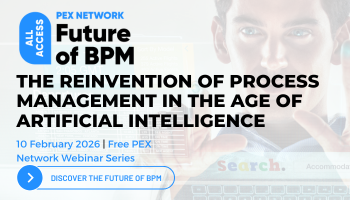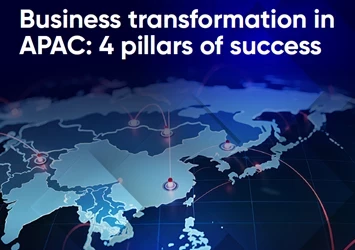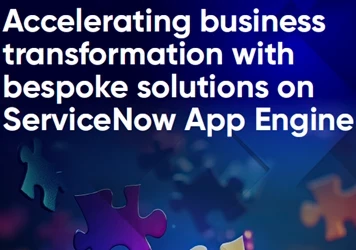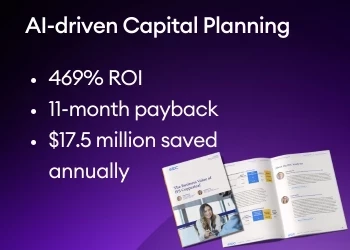Why acquisitions are only the beginning of business transformation
Future-driven leaders setting out to acquire new technologies should also consider the processes that enable it
Add bookmark
Acquisitions are only the beginning of your business transformation strategy. Companies always have their sights on acquiring a new capability. As the excitement builds, they believe that possessing something new equates to a competitive advantage.
This is certainly the case for strategy models appearing at business schools, consulting firms and forward-thinking leaders. Such strategy models may vary in design, but they’re strikingly similar in one respect: they suggest that acquiring a rare resource will lead to a competitive advantage. Adding a promising startup, new patent portfolio or emerging technology will make you stand out against competitors. Exactly how these resources lead to an advantage is rarely explained.
How soon after an acquisition does the competitive advantage appear? If so, how long does the advantage last? Following the strategy models will make us believe that the competitive effect is instant and lasts indefinitely – so long as that rare resource is in possession.
Join the PEX Network community

Don't miss any news, updates or insider tips from PEX Network by getting them delivered to your inbox. Sign up to our newsletter and join our community of experts.
Learn MoreAcquisitions are only the beginning of transformation
Commonsense tells us that acquiring an acquisition phase is only the beginning. Plenty of work happens behind the scenes. A competitive advantage comes not so much about what you acquire, but how you integrate it. Technology includes the material components such as software and hardware. It also includes all the processes that allow it to work (skills, infrastructure and maintenance).
The “pressure to grow” obsession has led to acquisitions that companies cannot support. It’s time to pause and ask if you have the people and processes to support a new acquisition. Whether your team is acquiring generative artificial intelligence (AI) or more standard tools such as Microsoft 365 apps, balance your expectations of an instant return. A positive Net Present Value (NVP) doesn’t say much about the transition costs.
Process Integration is the real advantage
This calls for a shift in mindset. Acquiring new technology is just the beginning. Whatever is being acquired has to at least work to a satisfactory level (unless it was intended as an experimental project). This would include all the processes that enable the technology, such as the IT infrastructure, security, updates and data pipelines.
Let’s take the humble chatbot. From the outside, it’s just a conversational interface. Users will say that it can generate text like others, but its real engine is a large language model (LLM), powered by data infrastructure, continuous learning, reinforcement loops, reliability testing and security protocols. These are less visible to users but are critical to performance.
Judging the value of technology based on its looks may seem like innocent fun, but it’s no way to assess its full potential. It can also send teams down a chaotic path. Just because the company Intranet looks like a digital filing cabinet, doesn’t mean it should be treated like one. Just because Excel looks like a personal notebook with grids, doesn’t mean it should be used accordingly. In reality, it was built for financial spreadsheets – not software project management, not employee rostering, not note-taking.
Those who focus on how technology looks would be better suited to art and design. Leaders who are serious about digital transformation should look at the ‘engine’ underneath the technology and figure out how that fits into their organization.
Join us at All Access: AI in Business Transformation 2025 and learn how to future-proof your business with the right strategy and latest technology
Chasing efficiency is not a strategy
AI, analytics and autonomous agents will be the emerging trend of this decade. While the world’s brightest minds struggle to understand their full potential, some companies already claim to know what they can and should be applied to. When AI emerged, one of the first use cases was: can we cut costs? Can the operations team use it to reduce headcount? Can conversation chatbots be used to automate call centers? Jumping to speed and cost ignores the creators’ intent and the broader transformational potential these tools offer.
Let’s take a moment to remember the vision behind some of the world’s most successful tech companies:
- Sam Altman (OpenAI): “Our mission is to ensure that artificial general intelligence benefits all of humanity.”
- Elon Musk (Tesla): “To accelerate the world’s transition to sustainable energy.”
- Jeff Bezos (Amazon): “Our vision is to be Earth’s most customer-centric company.”
- Mark Zuckerberg (Meta/Facebook): “Give people the power to build community and bring the world closer together.”
- Mike Cannon-Brookes (Atlassian): “To unleash the potential of every team.”
Leaders of these iconic tech companies didn’t start with efficiency, but somewhere higher on the value chain. Their multi-billion valuations were not due to efficiency and colorful websites. They were guided by their vision, focused on problems worth solving and offered efficiency gains as a by-product. Making a horse more efficient is not the right problem to solve in the age of cars.
Owning technology isn’t enough
A patent is a good example of a rare resource. However, possessing this rare resource is not enough to create a competitive advantage. The US and China remain the top countries in sheer patent volume. They symbolize innovation, offer defensive value and may enhance the perceived worth of a firm. However, not all patents lead to commercial outcomes. Some studies have revealed that 97 percent of patents don’t recover the cost of filing their application. Many fade into obscurity, never forming the basis of a successful product or revenue stream.
A patent might protect a novel idea, but without an actual business problem, it offers little more than a signaling tool. A patent signals commercial potential to its customers, shareholders and internal leaders. It still requires a series of small, iterative learnings that accumulate over time.
Focusing on integration
A competitive advantage is not something you win once and keep forever. Even when new technology is acquired, its process must still be integrated into the business. Being able to integrate people, processes and technology is the real competitive edge.
Start by defining technology as a process, not just a physical product. Future-driven leaders setting out to acquire new technologies should also consider the processes that enable it. The infrastructure, security, updates, data pipelines and team members are equally important.
Consider the problems that are worth solving. Focus on problems worth solving, as a means for transformation, and resist the urge to apply all technology for the sake of efficiency. You want to discover what problems it solves within and beyond your department. If stuck with business use cases, it can be helpful to begin with the motivation of the original creators of that technology.
Take AI again. If a leadership team defines AI solely as an efficiency driver, their teams will build experience only in that direction. They will optimize for cost savings rather than innovation. Soon, they’ll find themselves locked into a low-value loop – missing opportunities to tap into AI’s less visible capabilities like the ability to assemble data engineers, infrastructure specialists and subject matter experts.
A competitive advantage is temporary. Deploy it one after the other or beginning with efficiency is simply no shortcut to a competitive advantage. The real competitive advantage is the learning process required to make the acquisition work.
All Access: Future of BPM 2026

You asked, and we listened. Business process management (BPM) remains the cornerstone technology for driving organizational transformation, according to the survey results featured in the latest PEX Report. As we look toward 2026 and beyond, generative AI, agentic AI, and intelligent process orchestration are redefining how processes are designed, executed, and optimized. BPM is your key to adapting swiftly and effectively in this new era.
PEX Network is bringing together industry leaders, technology innovators, and thought leaders to answer your biggest questions and explore the advancements reshaping business today. And you're invited. Register for free to save your spot now!
Register Now












